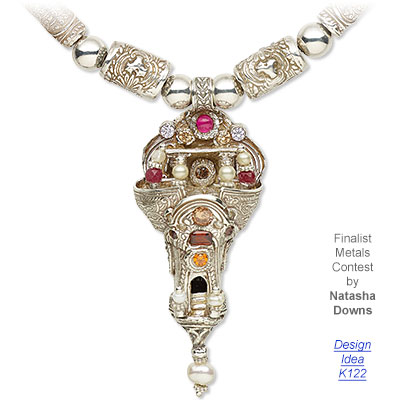Terracotta
Terracotta, terra cotta or terra-cotta Italian: "baked earth", from the Latin terra costa), a type of earthenware, is a clay-based unglazed or glazed ceramic, where the fired body is porous. Terracotta is the term normally used for sculpture made in earthenware, and also for various practical uses including vessels (notably flower pots), water and wastewater pipes, roofing tiles, bricks, and surface embellishment in building construction. The term is also used to refer to the natural brownish-orange color of most terracotta, which varies considerably.
This article covers the senses of terracotta as a medium in sculpture, as in the Terracotta Army and Greek terracotta figure, and architectural decoration. Asian and European sculpture in porcelain is not covered. Glazed architectural terracotta and its unglazed version as exterior surfaces for buildings were used in Asia for some centuries before becoming popular in the West in the 19th century. Architectural terracotta can also refer to decorated ceramic elements such as antefixes and revetments, which made a large contribution to the appearance of temples and other buildings in the classical architecture of Europe, as well as in the Ancient Near East.
In archaeology and art history, "terracotta" is often used to describe objects such as figurines not made on a potter's wheel. Vessels and other objects that are or might be made on a wheel from the same material are called earthenware pottery; the choice of term depends on the type of object rather than the material or firing technique. Unglazed pieces, and those made for building construction and industry, are also more likely to be referred to as terracotta, whereas tableware and other vessels are called earthenware (though sometimes terracotta if unglazed), or by a more precise term such as faience.
Contents
- 1Production and properties
- 2In art history
- 2.1Architecture
- 3Advantages in sculpture
- 4See also
- 5Notes
- 6References
- 7External links
Production and properties
An appropriate refined clay is formed to the desired shape. After drying it is placed in a kiln or atop combustible material in a pit, and then fired. The typical firing temperature is around 1,000 °C (1,830 °F), though it may be as low as 600 °C (1,112 °F) in historic and archaeological examples. The iron content, reacting with oxygen during firing, gives the fired body a reddish color, though the overall color varies widely across shades of yellow, orange, buff, red, "terracotta", pink, grey or brown. In some contexts, such as Roman figurines, white-colored terracotta is known as pipeclay, as such clays were later preferred for tobacco pipes, normally made of clay until the 19th century.
Fired terracotta is not watertight, but surface-burnishing the body before firing can decrease its porousness and a layer of glaze can make it watertight. It is suitable for use below ground to carry pressurized water (an archaic use), for garden pots or building decoration in many environments, and for oil containers, oil lamps, or ovens. Most other uses, such as for tableware, sanitary piping, or building decoration in freezing environments, require the material to be glazed. Terracotta, if uncracked, will ring if lightly struck.
Painted ("polychrome") terracotta is typically first covered with a thin coat of gesso, then painted. It has been very widely used but the paint is only suitable for indoor positions and is much less durable than fired colors in or under a ceramic glaze. Terracotta sculpture was very rarely left in its "raw" fired state in the West until the 18th century.

No comments:
Post a Comment